We warmly welcome Tobias Churton, author of The Lost Pillars of Enoch, as our featured author for April. Tobias is a leading scholar and expert on Gnostic Spirituality and Western Esoterism. In this article, he gives an overview of his investigation around The Lost Pillars of Enoch, taking readers back to a time in human civilisation when science and religion were considered one.
“This ambitious book traces the antediluvian origin of the spiritual wisdom hymned in The Book of Enoch. Churton explores the path of this unifying truth through the teachings of the mystery traditions that have served to initiate humanity ever since. Of central concern to this thesis is that the dichotomy between science and spirit is false. Truth is the unifying bond that excludes only error. The breach between science and religion is an artificial construct that serves to hinder understanding. I highly recommend this book.”
JAMES WASSERMAN, AUTHOR OF THE MYSTERY TRADITIONS AND HASAN-I-SABAH
“Humanity’s near-manic obsession with lost and rediscovered wisdom is the basis for nearly all esoteric philosophy and practice. Taking the ancient myths and histories as his guide, Churton provides us not only with an interpretation of Enoch and the various ideas around the ‘known-and-lost-wisdom dichotomy’ as they have shaped our views across history; he also gives us a means of shaping and entering the future. It is a future quickly coming upon us, wherein the Pillars of Enoch once again are a depository of the collective wisdom of the past and the guide for a humanity seeking to understand itself and, like Enoch, ‘walk with God.’”
MARK STAVISH, AUTHOR OF EGREGORES
Pillars of Knowledge
First published in 1737, William Whiston’s The Genuine Works of Flavius Josephus has long helped people fill out the accounts of Jewish history found in the Bible with Josephus’s sometimes complementary records set down during the “eighties” of the first century CE.
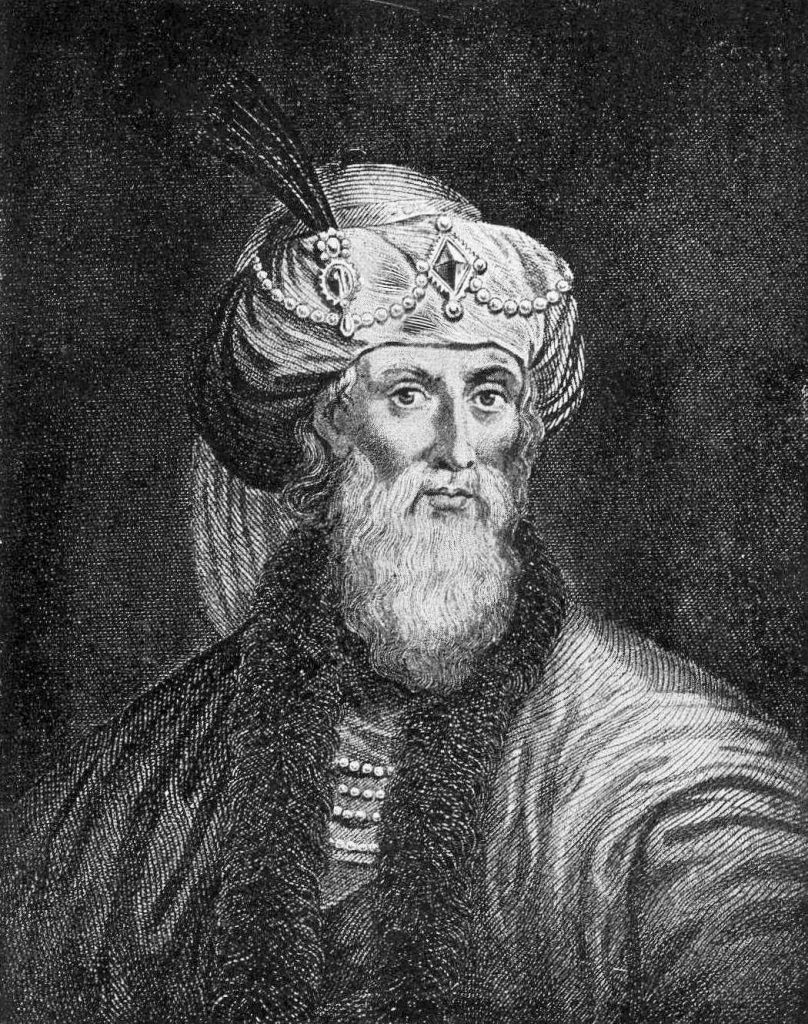
The romanticized woodcut engraving of Flavius Josephus appearing in William Whiston’s translation of his works. (PD0)
One striking story to appear in Josephus’s Antiquities of the Jews was one unknown to the Bible. Josephus tells us of two pillars: one brick, one stone, on which the descendants of Seth (Adam’s third son) inscribe all they’ve learned of astronomy, to save the knowledge from a coming destruction of the earth by either fire or water, prophesied by God to Adam and passed on to his descendants. If it were a flood, a stone pillar would still stand to testify to what others had achieved.
Josephus places the story as part of his Noah’s Flood account, for there we learn of why God was prepared to destroy all living things on earth, being sorry for ever having made a world that could go so wrong. Noah shows a similar respect for God to that displayed by his great grandfather Enoch, who, Genesis tells us, “walked with God”. In fact, Enoch was so close to God —to such an eminent degree indeed that Enoch did not die on earth, or indeed, we may surmise, ever. “God took him,” we are informed bluntly, presumably to heaven.
Accompanying Genesis’s account of the lead-up to the Flood (Genesis 6:1-8) is a complex of roughly juxtaposed narrative elements, assembled and/or edited apparently to account for the corruption and ensuing punishment. Not surprisingly, the ambiguity of these elements has stimulated speculation, much of it extravagant.
The elements include a reference to “the sons of God” coming to take the fair daughters of men as wives; the existence of “giants in the earth in those days”; the idea that after the giants, human daughters impregnated by the “sons of God” bear children who become “mighty men which were of old, men of renown”; and, finally, that human beings’ imaginations were directed only to evil, causing God to repent over creating living things. Such is the dislocating effect of text-editing that it is impossible to determine with certainty a sequence of causes and events to elucidate precisely the original intentions behind the various elements. For example, the Greek Septuagint’s “gigantes,” translated uncertainly as “giants” is itself a translation of the Hebrew word “nephilim.” This word occurs in Ezekiel (32:27) where it is translated as “fallen,” but applies to uncircumcised warriors hell-bound for sin.
“Sons of God” generally (though not exclusively) is understood in this context as angels of heaven, an inference taken up later in the apocryphal First Book of Enoch (2nd to 1st century BCE, chapters 1-36) where the “fallen” idea is directly linked to angels. In I Enoch they’re called “Watchers” (“the awake ones”). Their quitting heaven for earthly delights is responsible not only for persistent evil in the world but also for any number of dangerous sciences passed on illicitly to humankind.
It will be noted that Josephus—a for-his-time quite rational assessor of Jewish history—holds no place in his narrative for apocalyptic implications of the type central to I Enoch’s “Book of the Watchers.” This may well be because for Josephus, hot-headed apocalyptic hopes had, in his experience, led to what he came to consider the “banditry” of the Jewish Revolt of 66-73 CE, a hopeless insurrection crushed by Roman forces. Josephus had originally joined the revolt before changing sides and hailing Roman General Titus’s father Vespasian as the anticipated “saviour of the world.” This earned him a billet at the imperial epicentre and Vespasian’s family name “Flavius” being attached to his name, now Latinized as Josephus.
In Josephus’s rational hands, the pillars of Sethite knowledge receive an almost universalist colouring, the story presented for its educative value as, arguably, the world’s first story of archaeology. Indeed, by placing his story within a timespan of observable history, Josephus demonstrates a desire to root it in reality. He does this by highlighting a still observable historic artefact.
This artefact provides the true start of my narrative in The Lost Pillars of Enoch.
Who Came First?
Josephus informs his readers that a surviving pillar could still be seen in the land of what his translator calls “Siriad”. The original Greek text, however, has “Seirida.” Apparently attempting to conflate later Latin with an earlier Greek version of Josephus’s text, translator Whiston appears to have taken the word to mean “Syria.” Whiston was aware that Greek historian Herodotus had also written about ancient stelae still visible. This leads Whiston to compound his error. Herodotus referred to stelae erected in Syria by, as he supposed, Egyptian king Sesostris (possibly Senusret III, ca. 1862-1844 BCE). Whiston felt sure Josephus had confused this reference to “Sesostris” with the biblical “Seth,” highlighting his “discovery” in a footnote.
In fact, Herodotus had himself misidentified the stelae. Despite there being a still-extant stele in what used to be Roman Syria, by the Nahr al-Kalb (“Dog River”) northeast of modern Beirut, Lebanon (it celebrates victories of pharaoh Ramesses II (ca. 1279-1213 BCE, not Sesostris), Whiston did not realise that the Greek word “Seirida” was used in late antiquity, not to refer to “Syria,” but rather to denote the land of those who worshipped “Seirios”, that is, our familiar “Dog Star”, Sirius (Latin). Sirius’s heliacal rising in July in antiquity signalled the annual inundation of the Nile and the start of the sacred new year in ancient Egyptian religion. The goddess of the star was called Sopdet, or in Greek, Sothis… Josephus would have been extremely loth even to hint that it might be construed that the descendants of Seth, with all their knowledge, might by opponents have been identified with the sciences of ancient Egypt. He makes it clear in his Antiquities that he believed the Egyptians received their science exclusively through Abraham who visited Egypt with his wife Sarai, whom pharaoh took a fancy to (note the “one-way” attraction).
This Jewish versus Egyptian competition was perpetuated vociferously in Josephus’s lifetime, as Egyptian and Jewish proponents for the antiquity and primacy of their traditions fought over who came first. Josephus’s book “Against Apion” was composed because Graeco-Egyptian scholar Apion insisted the Jews stole many of their ideas from Egypt, which, Apion held, was more ancient, going back directly to the gods. Apion insisted on identifying the Jews with the “shepherd kings” (“Hyksos”) who had anciently despoiled Egyptian culture and religious tradition before noble Egyptians saw them off.
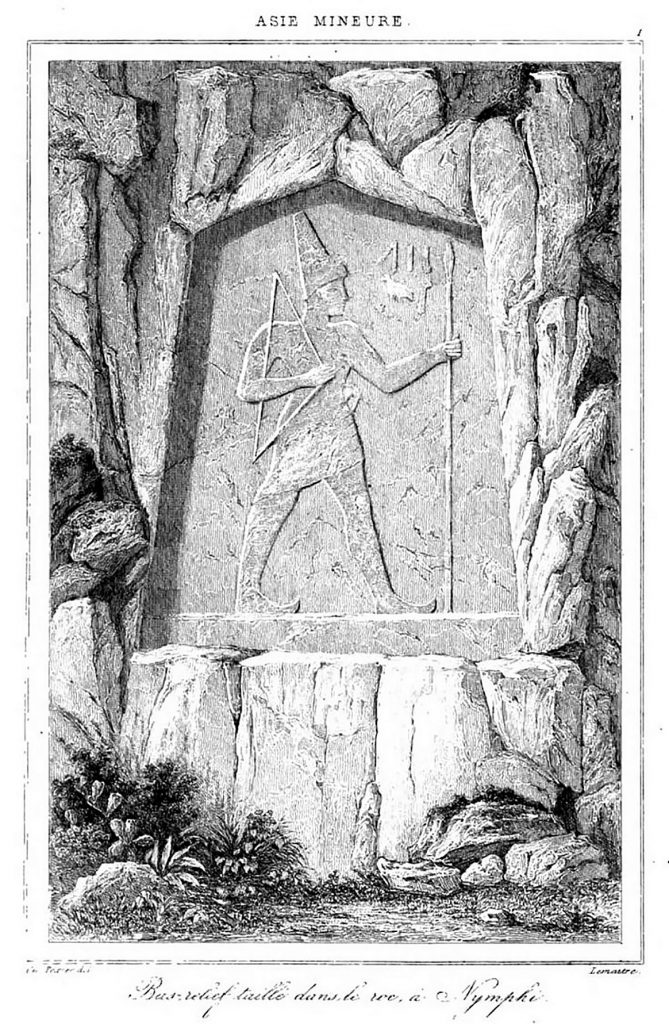
Karabel relief, by Charles Texier (PD0)
I shall just say here that my book does identify several sites that may have been understood nearly 2000 years ago as home to an antediluvian pillar belonging to a lost civilization, a time when, according to Genesis, there were sons of Adam, good and bad, “sons of God” who fancied human women, and “giants”; as well, of course, as “men of renown” or, arguably, fallen heroes – or angelic reprobates.
So, the first section of the book establishes the essential premise of the “lost pillars of Enoch,” namely, that there was a time, before the Flood, when knowledge of God, and knowledge of science, were one. We then explore the power and progress of this mythic idea.
The book next investigates how Josephus’s pillars of knowledge came to be associated with the names Enoch and Hermes. “Enoch” is, of course, Jewish, and “Hermes”, especially “Hermes Trismegistos” (Thrice Great Hermes, patriarch of wisdom) is Graeco-Egyptian, and to make the competitive issue even more interesting, we must contend with the fact that late antiquity was familiar with texts attributed to both these figures that purported to reveal truths about the origins of humankind and the intentions of God – and both figures were presented as having inscribed ancient knowledge to preserve it for future generations, in stories analogous, though not identical, to the Sethite pillar story, related (without giving his source) by Josephus. The question of who came first is an open one.
Palestinian monk and episcopal servant George Syncellus, who died in about 810 CE, chronicled an account of Egyptian historian Manetho, supposed to have lived in the 2nd century BCE. Josephus was familiar with Manetho’s works, quoting them in his Contra Apion. However, not all works attributed to Manetho (such as the Book of Sothis) were written before Josephus’s time, and some may have been compiled or been tampered with, for propaganda reasons. The “Book of Sothis” concerns the dating of Egyptian dynasties (note the Sothis-Seirios reference). Here, Syncellus refers to it and its supposed author:
In the time of Ptolemy Philadelphus he [Manetho] was styled high priest of the pagan temples of Egypt, and [Note!] wrote from inscriptions in the Seriadic land [my italics; the Greek is “en tēi Sēriadikēi gēi”], traced, he says, in sacred language and holy characters by Thoth, the first Hermes, and translated after the Flood . . . in hieroglyphic characters. When the work had been arranged in books by Agathodaemon, son of the second Hermes [Trismegistos] and father of Tat, in the temple shrines of Egypt, Manetho dedicated it to the above King Ptolemy II Philadelphus in his Book of Sothis…
The natural question when confronted with this account might be to suppose Josephus had taken his Sethite pillar story from an Egyptian original and placed it among Sethites of culpable morals, where “Seth,” progenitor of wisdom, replaces Graeco-Egyptian Thoth, god of magic, whom Greeks identified with their god Hermes. Such would justify Apion’s accusation that Jews perverted Egyptian traditions. However, the specifically Hermes Trismegistos religious and philosophical literature (Corpus Hermeticum) which might support such a claim (including the Korē Kosmou which described Hermes making tablets whence the Hermetic corpus derived) are usually dated to the second and third centuries CE, post-dating Josephus. Besides, the first Book of Enoch had been long current when Josephus lived. In that work, Enoch preserves knowledge and delivers it to his son Methuselah. It could be fairly argued that competitive Graeco-Egyptians transposed a Jewish story into a new Hermetic revelatory format. We just do not know, though the specific “pillar” element of the myth is, we may note, already identified by Josephus with Sirius worshippers (Egypt).
It is also the case that had Josephus been familiar with a story of Thoth, before the Flood, inscribing wisdom in hieroglyphs that after the Flood were taken from tablets and put into books by Hermes Trismegistos—a kind of incarnation of deity Thoth—he would certainly have believed the story was itself probably a lift from Moses’s account in Genesis of the wisdom of the descendants of Seth, because, as we have seen, Josephus was emphatic that Egypt gained its knowledge of astronomy from Abraham. Josephus would have regarded Sirius worship as just the kind of sin that caused the Flood in the first place: the kind of errant apostasy from the true God which left Egypt condemned by the prophets of the One God who insisted on tearing down pillars to other gods. One can easily see the complexities of this question! Josephus did not get the story from Genesis, but even if he obtained its rudiments from Egypt, it would have been natural and pious of him to translate them back into what he believed to be the authoritative, Godly narrative.
So, if an ancient pillar was venerated for antediluvian wisdom in “Seirida” (and there must have been numerous competitors for the dignity), then, in Josephus’s view, one was looking at the legacy of Seth’s inventive lineage, a special skein joined to the first Adam and blessed by God: an example to all who subsequently strayed from true religion and science, for, according to Jewish traditions, Egyptians, like all Gentiles, had been hostile to Jews because Gentiles anciently deviated from the original path ordained to those who “walked with God,” of whom the most remarkable, Genesis informs us, was Enoch, to whom we must now turn.
A Preserver of Knowledge
The name Enoch means in Hebrew something like “dedicated,” or even “initiated.” It was long a contender for association with Josephus’s pillars. On account of unique closeness to God, Enoch has been seen as an archetype of Man Restored, a being with the knowledge to affect the restoration of fallen humanity. In I Enoch chapter 81:1-3 we find:
And he [Uriel] said unto me:
“Observe, Enoch, these heavenly tablets,
And read what is written thereon,
And mark every individual fact.”
And I observed the heavenly tablets, and read everything which was written [thereon] and understood everything, and read the book of all the deeds of mankind, and of all the children of flesh that shall be upon the earth to the remotest generations.
Doesn’t this ring a bell with stories of Hermes Trismegistos imparting knowledge found on tablets in Egyptian temples? In I Enoch, Enoch is transported to earth to pass knowledge to son Methuselah, imparted subsequently to successive generations. This resonates with the relations Hermes enjoys with Agathodaimon in the Hermetica, a lost text of which (the Physika) identifies Agathodaimon with “Chemeu”, divine founder of what we now call “alchemy,” a knowledge of sacred provenance intended to be secreted from the profane.
We know about Hermes’s alchemical text Physika from the late third to fourth century CE alchemist, Zosimus of Panopolis. It is Zosimus who provides the first suggestion of possible conflation of Hermes and Enoch in a fragment of text from a work of his called “Imouth,” preserved by Syncellus. Zosimus refers to “Holy Scriptures” which refer to a race of demons availing themselves of women (strongly suggesting Enoch I’s take on Genesis 6). Zosimus notes that this is also mentioned in Hermes’s Physika. Zosimus goes on to say that disgraced angels from heaven also brought with them knowledge of alchemy. Zosimus does not say the alchemy itself is evil but laments its perversion into “unnatural” forms dependent on demonic participation, while knowledge of the “natural” tinctures remains reserved for spiritually enlightened or reborn souls, respectful of sacredness and in tune with God.
After the rise of Islam, we find “Sabians” in Harran in the eighth and ninth centuries honouring the Hermetica as scripture. They regarded Hermes and Enoch as the same person. Arabic-speaking scholars identified Hermes-Enoch with Idris in the Koran. The most brilliant astrologer of Baghdad’s Abbasid court, Abu Ma‘shar Ja’far ibn Muhammad ibn ‘Umar al-Balkhi (787–886), confirms this, identifying sage Hermes not only with Enoch but also with the Iranian “Adam,” Kayumarth. By the eleventh century, evidence from Moorish Andalusia shows the belief that it was Enoch himself who, hearing of the Flood to come, constructed Egypt’s temples and pyramids to preserve threatened knowledge. (Sāid al-Andalusī (1029–1070) in writing about nations that respected learning in his Tabaqāt al-᾽Umam (“Categories of Nations,” 39.7–16). In the same period, an Orthodox Christian collection of ancient texts, the Palaea Historica, explicitly identifies the fashioner of the tablets of knowledge on marble and brick with the righteous Enoch.
The middle ages inherited the idea that the figures Enoch and Hermes were essentially one historic person, perceived by different traditions but united in dedication to the purposes of God.
The mighty influence of these traditions is traced through history to our own day. The Lost Pillars of Enoch demonstrates how the theme of an antediluvian, effectively lost civilization (though often closely identified with a Hermetic-style Egypt—its product, so to speak), as one of the great motivators in the development of western thought, while the image of the “lost pillars” itself becomes a kind of epitome, or even symbol, of a transforming, elevating knowledge, material and spiritual, passed to the future.
The Search For Something Lost
Now we can look again at Hermetic influence within Renaissance thought in the persons of Ramon Llull, Marsilio Ficino, Pico della Mirandola, Francesco Giorgi, Giordano Bruno, Copernicus, and later John Dee and the first “Rosicrucian” explosion in the early seventeenth century. All these people were impressed by the idea of a prisca theologia or “ancient theology” that went back to Adam, before the Flood, and which had, in part, been preserved by a Hermes equated with Enoch. This supposed antediluvian knowledge was considered to underly all subsequently divided knowledge, maintaining the keys to unite all sciences in a unified system operating on multiple planes pointing to a single divine origin, accessible to enlightened mind that could henceforth pump forth new insight into truth like a fountain. We can see how Copernicus justified his heliocentric science by astute reference to Hermes, through whom knowledge of the sun’s centrality descended through largely forgotten antique theories of Pythagoras’s pupil Philolaus and of Aristarchos of Samos (ca. 310–ca. 230 BCE). Pristine knowledge was returning to earth to free humankind from spiritual darkness and ignorance.
Readers may next encounter the most detailed and surprising treatment ever undertaken of the place of Enoch and Hermes —and of the “pillars of Enoch” (seen as originally more significant than the pillars of Solomon’s Temple)—in the formation of a pre-Grand Lodge Freemasonry. At the heart of Freemasonry lies a search for something lost. We explore a profound mysticism present within the London Company of Freemasons in the period when, on the continent, a great ferment was stirred by pirated publications of the so-called “Rosicrucian” manifestoes, auguring an open brotherhood of knowledge.
A careful treatment of Isaac Newton follows, with due emphasis on his alchemical research and a fundamental belief that what he was credited with discovering was in fact the privileged knowledge known, not only to a known Philolaus but to a largely unknown antiquity whose science and religion was one, as Newton intended ours to be. Stephen Snobelen, director of the Newton Project, Canada, insists that Newton’s theological writings were equally important to Newton as was his natural philosophy: components of Newton’s overarching concern: “the restoration of man’s original pristine knowledge of God and the world.”
The theme of “All Religions are One,” derived from Enoch and Hermes’ mythologies, informs the next section, which details the impact of antediluvian speculation of William Stukeley and William Blake. This mythology invokes an antediluvian unity with God, spoiled by the Fall of Man from primitive union with deity into a shattered image, reflected in a shattered soul. Within Blake’s time, Reason alone usurped a former harmony of faculties, barely visible beyond the veil of the “Flood”.
Stukeley’s Antiquarianism involved a profound need to recover what was lost and to bring it to light for people’s improvement. We see here a clear analogy to rediscovering the pillars of Enoch. In Palaeographia Sacra (1763), Stukeley set out to discover “a scheme of the first, the ancient, and patriarchal religion that had first existed before the birth of Moses and Christ.” Nice to know Stukeley formulated the theme of this book some 285 years ago!
Born six years before Stukeley’s Palaeographia was published, William Blake was fully aware of the idea of a pristine religion and science, subsequently corrupted in time but, unlike Stukeley, he attributed its corruption in Britain to the Druids, having read in Roman writer Tacitus about Druidic human sacrifice—and the biblical account of Abraham almost sacrificing his own son. Blake understood the Restoration of Man and all his faculties, spiritual and material, as the return of “Albion, the Ancient Man” to his “sister, Jerusalem”: spiritual liberty. The vision seizes the imagination of many today. Are the “lost pillars” returning to us?
The theme of the reunion of Fallen Man, the apocatastasis, or restoration of humankind to the divine image, is properly explored in an account of self-proclaimed neo-Pythagorean Antoine Fabre d’Olivet (1767–1825). He embraced the idea of the “Tradition,” which from antediluvian times (before 4500 BCE) had, he believed, descended to us as esoteric fragments. Also in France, Louis Claude de St. Martin (1743–1803) was fired by a vision of the need to return to a primordial state of true knowledge. St. Martin called for a “restitution” or reintegration of the shattered divine image of Man: his return to his true being. Ordinary “reason” was not—as many “Enlightenment” figures supposed—the limit of intelligent consciousness.
Madame Blavatsky’s theories rest strongly on Western Hermetic foundations mediated through language she acquired in India, and the amalgam of Fabre d’Olivet’s original “Tradition” and Blavatsky’s “double evolution” schemes of physical and spiritual evolution towards complete spiritual realisation are shown as strands from our ancient source still permeating our own times.
A treatment of Aleister Crowley’s Thelema system, claiming “the Aim of Religion, the Method of Science” comes to the fore as a fresh, if highly controversial, synthesis of ancient insight of distant, largely unknown civilization: a tradition Crowley called “Magick,” evoking the magi of old.
The final chapters offer my integrated thought on the possibility of a fresh impulse to reunite science and religion based on an understanding of the esoteric strands within Paganism, Hinduism, Judaism, Buddhism, Christianity and Islam, amid the numerous theosophies drawing on aspects of each. The book locates the spiritual unity of Hermetic thought, Advaitist jnana-yoga, Kabbalah, Zen, Gnosis, Sufism and the varied branches of modern “western esotericism.”
From the perspective acquired in this book, the future is not one of “lost pillars” but of pillars re-found, and even understood, for those with the eyes to see them.

Llulls Tree of Science (1505) (PD0)





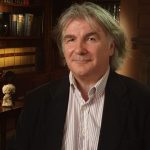
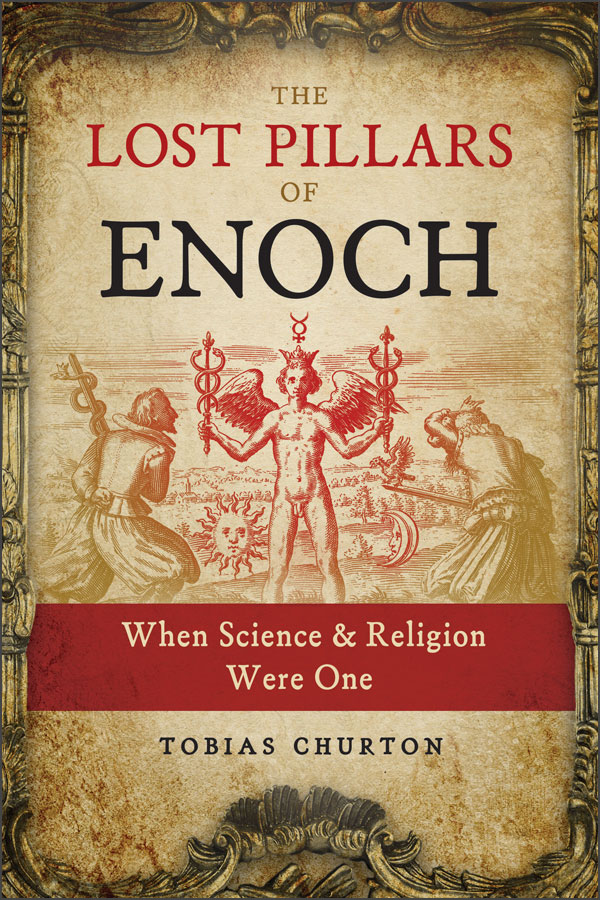

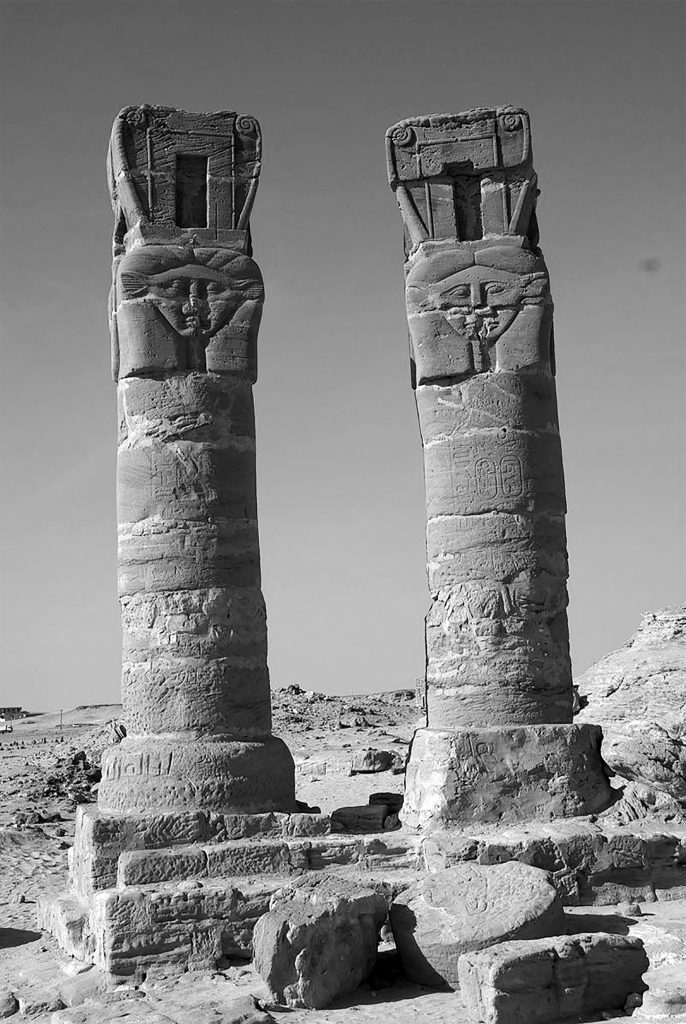


Fascinating article! Thank you for sharing!
Great detective work. The case is not cold. The ‘pillars’ were never lost and could not be lost, but the same contradictory mindsets remain the same. Does your book also trace the tradition that knowledge is never lost, but accessible in nature and the subconscoius to the conscious mind, by following archetypal structure; myth (including another kind of pillars, of Hercules and Samson), Plato, alchemy, Periodic Table, Jung, physics. Conspiracists are incapable of access to knowledge of who and what we are, since they remain obsessed with finding or ‘restoring’ some committee’s ‘corrupted Record’, instead of recognising that any small group of people could re-start culture, including its crafts and sciences and instant ‘corruptions’ or misunderstandings. No particular version of the ‘record’ is indispensable. You offer enough context to reveal that diffusion and political appropriation lays a thick layer of camouflage over the real and perpetual source of knowledge. Archetypal inspiration, freely available. Political exploiters and academia hate real science, since it cannot be sold or taxed.
“Of all the offspring of Time, Error is the most ancient, and is so old and familiar an acquaintance, that Truth, when discovered, comes upon most of us like an intruder, and meets the intruder’s welcome.”
The pyramids of Giza are the Pillars of Enoch. He coded the knowledge into their orientation and design.
“The pyramids of Giza are the Pillars of Enoch. He coded the knowledge into their orientation and design.”
And the knowledge of “Religion re-united with Science” is resurfacing into all of our our consciousness with a precise half-precessional time cycle “coded” at Giza, deciphered by the work of Robert Bauval and Graham Hancock with their great book “Message of the Sphinx.”
Great article Mr. Churton.
“This supposed antediluvian knowledge was considered to underly all subsequently divided knowledge, maintaining the keys to unite all sciences in a unified system operating on multiple planes pointing to a single divine origin, accessible to enlightened mind that could henceforth pump forth new insight into truth like a fountain.”
“At the heart of Freemasonry lies a search for something lost.”
(Quoted from the very informative article by Tobias Churton)
The pyramids of Egypt indeed convey precious knowledge – a message of great significance to the present generation and paramount to their posterity… https://sites.google.com/site/earthgyration/Home
Matey with the triangle is a surveyed, a lot of the carvings are of the tools they used,we might call it a cross but it’s a 4 legged level the rod and sash are the first marks for the building,temple etc. said a mushroom